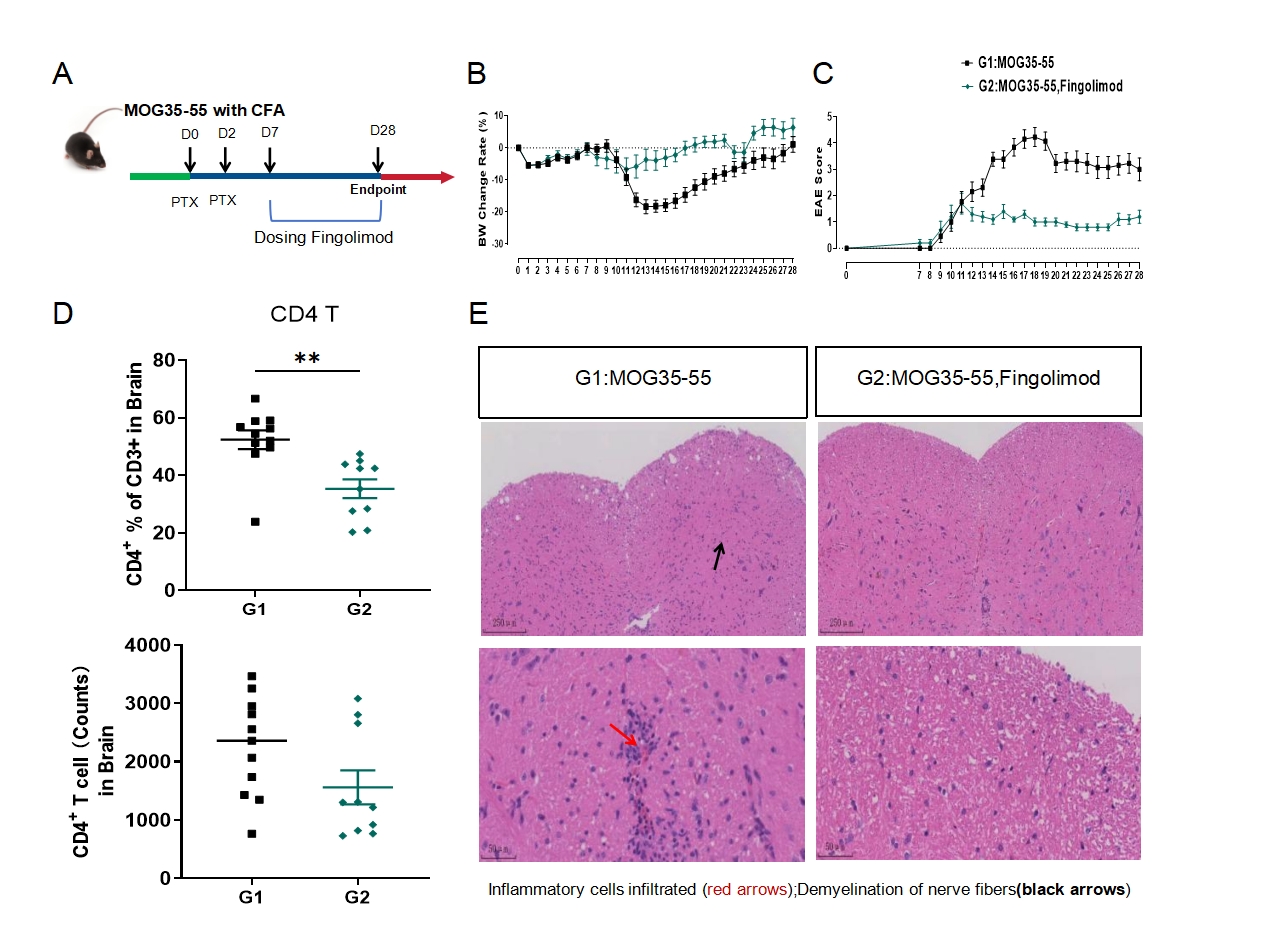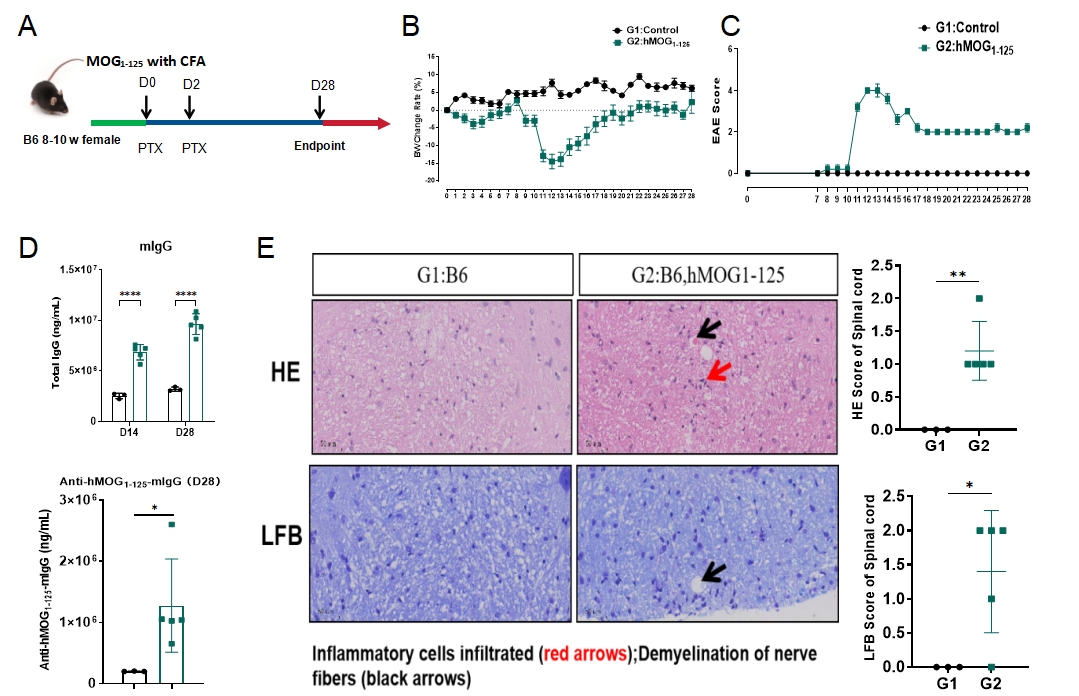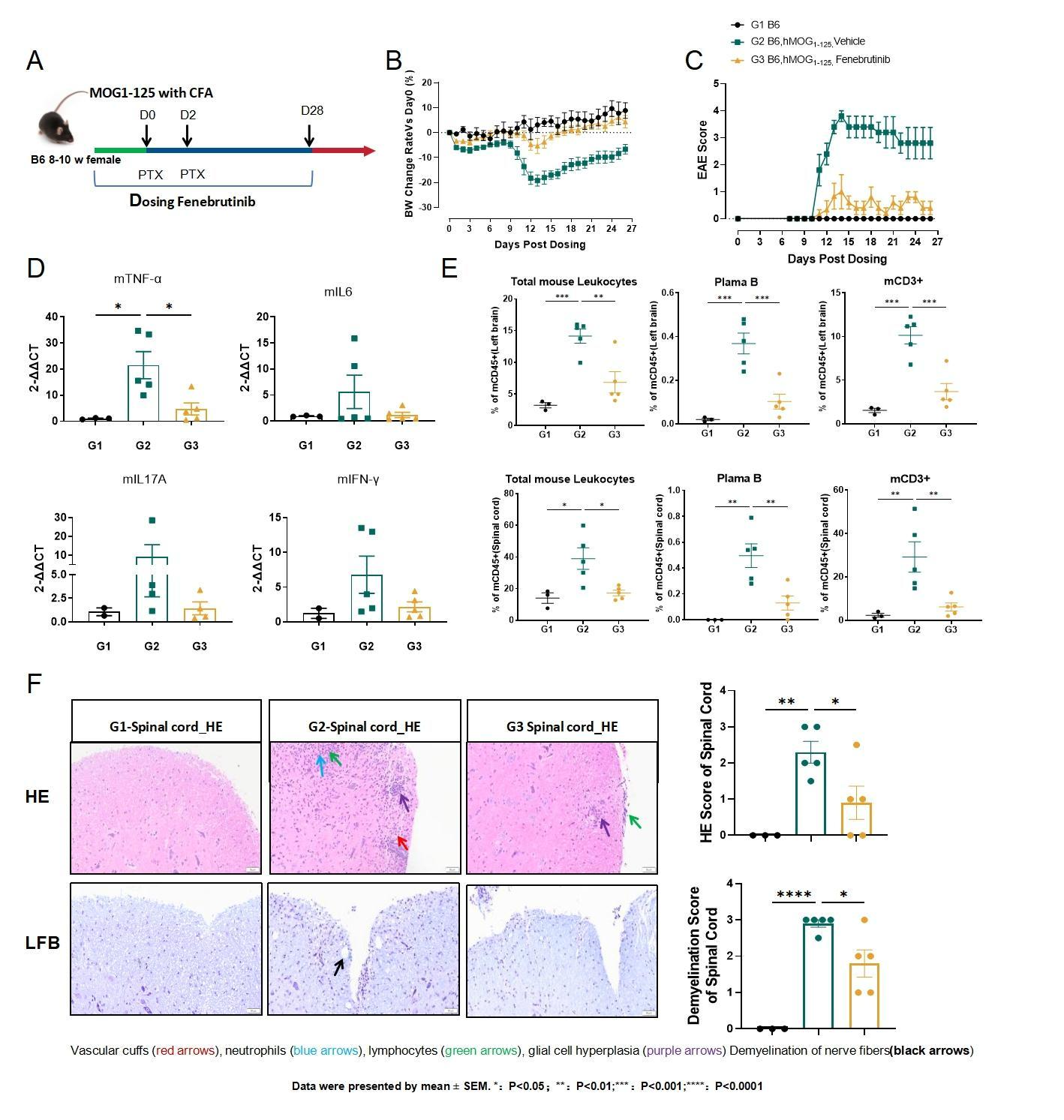Multiple sclerosis (MS) is an autoimmune disease, where, the immune system attacks the protective sheath surrounding nerve fibers in the central nervous system. This results in disrupted communication between brain and body, leading to debilitating symptoms such as fatigue, motor dysfunction and cognitive impairment.
To aid the development of new multiple sclerosis treatments, GemPharmatech provides several validated MS models to meet your research needs.
Experimental autoimmune encephalomyelitis (EAE) is the most commonly used method to induce MS disease, including the models mainly dominated by T cells induced by MOG35-55 and the B cell - dependent model induced by MOG1-125.
MOG35-55-induced EAE model

Fig.1 Efficacy valuation of Fingolimod in MOG35-55 induced EAE model
The MOG35-55 induced model strategy is shown in Fig.1A. Mice from MOG35-55 induced group displayed significantly decrease in body weight (Fig.1B) and increase in EAE score (Fig.1C). The percentage and counts of CD4+T cells in brain tissue decreased obviously after Fingolimod treatment (Fig.1D).The pathology of the spinal cord in Fingolimod treated group was significantly alleviated (Fig.1E). Data were presented by mean ± SEM. **:P<0.01.
MOG1-125-induced EAE model

Fig. 2 MOG1-125 induced EAE model
The MOG1-125 induced model strategy is shown in Fig.2A. Mice from MOG1-125 induced group displayed significantly body weigt decreased (Fig.2B) and EAE score increased (Fig.2C). The level of total mIgG and anti-hMOG1-125 antibody in the serum increased obviously in model group (Fig.2D). The HE score of spinal cord increased (Top), and Luxol fast blue (LFB) staining of spinal cord showed severe demyelination (Bottom). Data were presented by mean ± SEM. *:P<0.05;**:P<0.01;****:P<0.0001

Fig.3 Efficacy valuation of Fenebrutinib in MOG1-125 induced EAE model
Efficacy evaluation of Fenebrutinib in MOG1-125 induced EAE model strategy is shown in Fig.3A. Body weight (Fig.3B) and EAE scores (Fig.3C) were significantly alleviated after Fenebrutinib treatment. mRNA levels of mTNF-α,IL6,IL17A, IFN-γ in spinal cord were significantly increased in hMOG1-125 induced EAE mice, and decreased after Fenebrutinib treatment (Fig.3D). The percentage of total leukocytes, CD3+T cell and plasma B cell in the brain (Top) and spinal cord (Bottom) increased obviously in model group G2, and decreased after Fenebrutinib treatment (Fig.3E).The pathological changes of spinal cord were shown in Fig.3F(top), and Luxol fast blue (LFB) staining of spinal cord showed severe demyelination (Bottom) in model group G2 in Fig. 3F; after the treatment with the Fenebrutinib, the HE score and the demyelination score of spinal cord were significantly alleviated.

